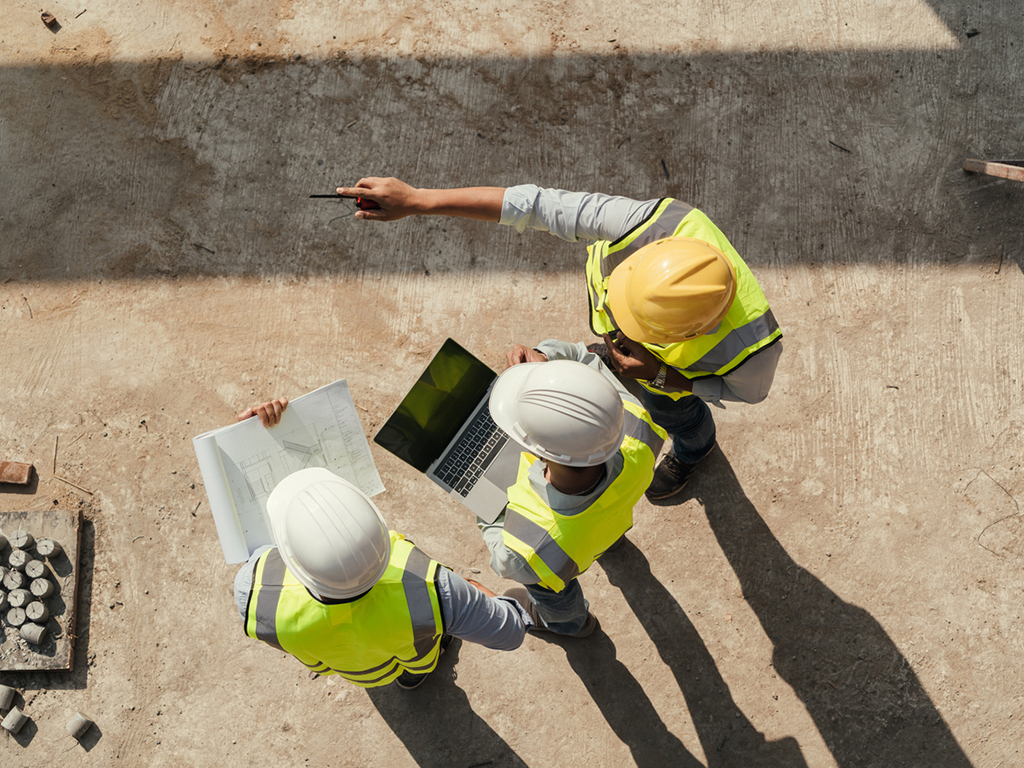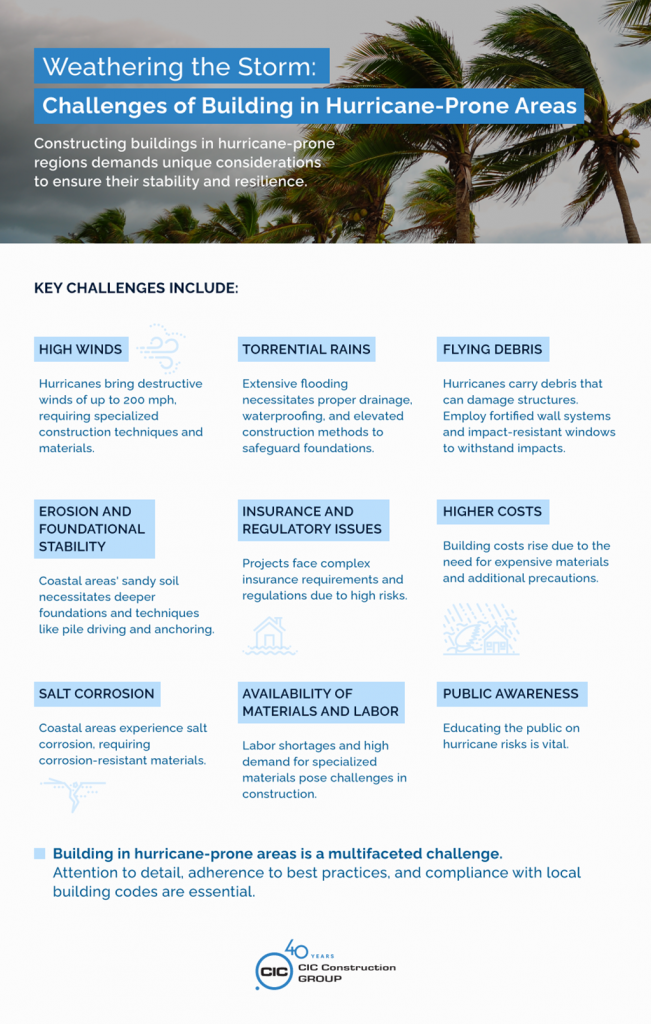Weathering the Storm: Challenges of Building in Hurricane-Prone Areas

Constructing buildings that withstand the ravages of time is a complex endeavor, but building in hurricane-prone areas such as the Caribbean, Florida, Texas and other Gulf States presents a unique set of challenges. These regions require special attention in construction to ensure that buildings remain stable and secure even in the face of devastating storms.
Challenges of Building in Hurricane-Prone Areas
1. High Winds
Hurricanes can generate winds of up to 200 mph, which can easily destroy even well-built structures. Buildings in hurricane-prone areas, therefore, must be designed and built to withstand strong and turbulent winds. Special construction techniques, such as reinforcing structures with steel bracings or concrete, must be employed to prevent damage or collapse.
2. Torrential Rains
Hurricanes usually bring with them torrential rains, causing extensive flooding and water infiltration that can undermine foundations and cause buildings to collapse. Adequate drainage systems, waterproofing and elevated construction methods are required to prevent damage caused by water.
READ ALSO: How resilient building construction mitigates damage caused by natural disasters
3. Flying Debris
Hurricanes can pick up and carry debris such as trees, cars, tools, furniture and roofing materials, among other things, that can inflict significant damage to buildings, even if the winds themselves are not strong enough to destroy the structures. Building materials and methods–such as, for example, fortified wall systems and impact resistant windows–should be used to ensure that buildings can withstand the impact of airborne objects without breaking.
4. Erosion and Foundational Stability
In coastal areas, soil conditions are often sandy and loose, which can destabilize foundations and lead to building collapse. Deeper foundations and specialized techniques, such as pile driving and anchoring to the ground, should be employed in these areas.
5. Insurance and Regulatory Issues
Building in hurricane-prone regions often means dealing with unique insurance requirements and extensive regulatory oversight, which add complexity to projects. insurance companies are often reluctant to insure buildings in hurricane-prone areas because of the high risk of damage. This can make it difficult for developers to obtain financing for projects in these areas.
6. Higher Costs
Building in hurricane-prone areas can be more expensive than building in other areas because of the need to use more expensive materials and take additional precautions against hurricanes.
7. Salt Corrosion
Coastal areas are prone to salt corrosion, which can eat away at various building materials and weaken structures over time. Special coatings and corrosion-resistant materials are needed to withstand this harsh environment.
8. Availability of Materials and Labor
The high demand for specialized materials and skilled labor can make construction more expensive and time-consuming in these areas. The construction industry often struggles with labor shortages, especially in hurricane zones where there’s a higher turnover rate among construction workers.
9. Public Awareness
Educating the public about the risks of hurricanes and how to protect themselves and their property is an additional challenge.

Must-Have Building Features
To withstand hurricanes, buildings must be designed and built with the following features in mind:
- Strong foundations: must be able to withstand high winds, high-speed flying debris and flooding.
- Heavy-duty framing: must be made of strong materials, such as steel or concrete.
READ ALSO: 25 types of concrete used in construction and their best applications
- Impact-resistant windows and doors: must be able to withstand high winds, pressure changes and flying debris without breaking.
- Roof overhangs: can help to protect the walls and windows from wind and rain.
- Anchoring: helps prevent buildings from being swept away by wind or water.
- Building elevation: helps avoid flooding damage.
- Storm shutters: can be used to protect windows and doors from wind and rain.
- High-quality materials: concrete, steel and impact-resistant glass are more likely to withstand high winds, torrential rains and flying debris than wood, vinyl and standard glass.
It’s also important to follow local building codes when constructing buildings in hurricane-prone areas. These codes are designed to ensure that buildings are safe and resilient to hurricanes.
Conclusion
Building in hurricane-prone areas presents a multifaceted challenge. From design and material selection to compliance with stringent building codes, every aspect of construction must be meticulously considered. With attention to detail, adherence to best practices and experience gained through previous hurricanes, it’s possible to create structures that are not only resilient but also environmentally sustainable and aesthetically appealing.
By following the design and construction practices outlined above, we can help to protect people and property from the destructive force of hurricanes.
Are you planning a construction project in a hurricane-prone area? CIC’s expertise in handling the unique challenges of building in the Caribbean ensures that your project will be built to last. Contact us today to learn how we can make your vision a safe and enduring reality.
